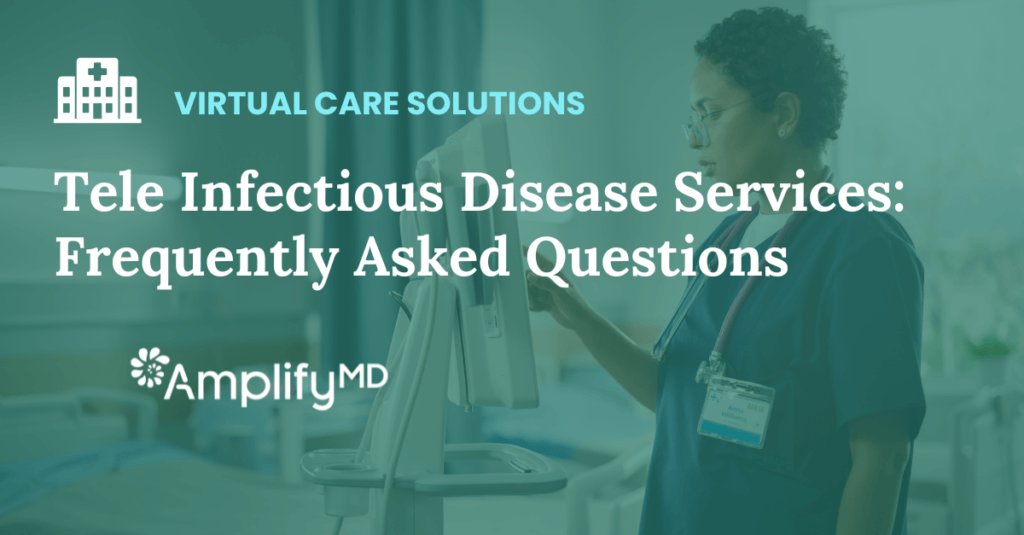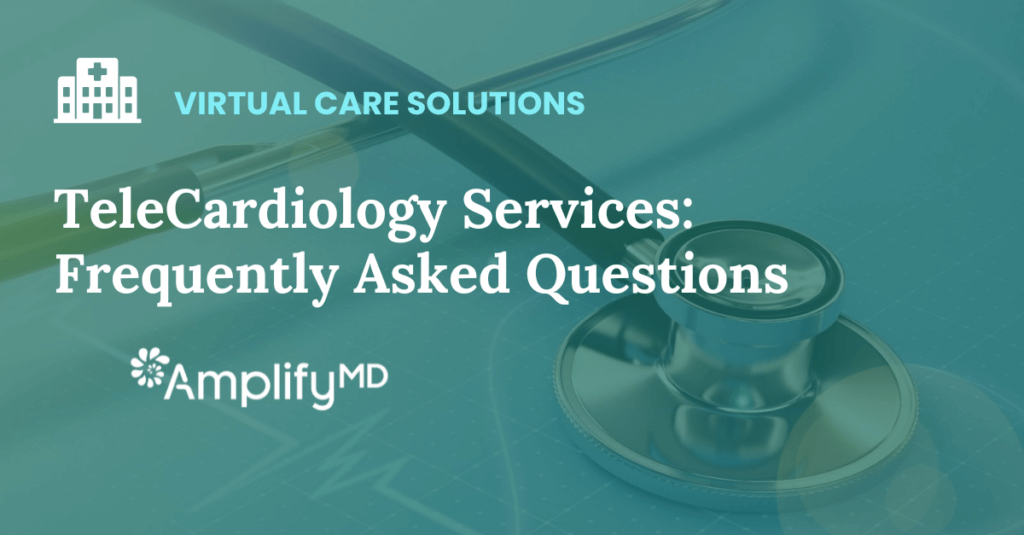According to the Centers for Disease Control and Prevention (CDC), approximately 795,000 Americans experience a stroke each year, and strokes are a leading cause of long-term disability and the fifth leading cause of death in the United States. Patients experiencing a stroke must receive specialized care as soon as possible in order to improve their chances of survival and full recovery. In times and areas where a neurologist is not locally available, a TeleStroke program (also known as Stroke Telemedicine) can make a life-saving difference. TeleStroke programs connect expert stroke specialists to local emergency room providers to coordinate life-saving assessments, examinations, diagnostic reviews, and treatment plans. TeleStroke programs significantly improve outcomes for patients by ensuring the appropriate intervention is provided as quickly as possible.
Frequently Asked Questions
1. What is TeleStroke?
TeleStroke is a virtual care program that uses telemedicine technology to provide timely evaluation and treatment for stroke patients. Programs are typically established in remote areas or in any hospital that does not have 24/7 stroke neurology support. TeleStroke involves neurology specialists assessing stroke patients remotely through video conferencing and medical imaging, enabling faster diagnosis and initiation of treatment of stroke cases, such as administering clot-busting medications or arranging for transfer to a stroke center.
2. How is technology used in TeleStroke care?
TeleStroke technology has evolved considerably since the first programs started over 20 years ago. Today, cutting-edge TeleStroke programs use technology across the entire encounter to save time and create efficiencies, including the initial alert and assignment of the case to a remote neurologist, direct access to diagnostics, video to see the patient directly, recommendations and documentation, and follow-ups in real-time. Using award-winning virtual specialty care platforms like AmplifyMD allows health systems to seamlessly collaborate and communicate with TeleNeurologists, ensuring timely and evidence-based care, with every step tracked and documented for quality assurance. In a field where “time is brain,” TeleStroke technology can make a world of difference.
3. What are the benefits of TeleStroke solutions?
Telestroke programs are a lifeline for patients, especially in rural areas. They offer immediate access to skilled neurologists who can remotely assess patients, interpret diagnostic tests, and recommend appropriate treatment strategies. Telestroke programs ensure a swift diagnosis of the type of stroke a patient is experiencing. For an ischemic stroke, the patient may receive a tPA treatment and avoid an emergency transfer to another hospital. Telestroke programs have been proven to reduce the time to treatment, reduce interfacility transfers (IFTs), empower local healthcare teams, and improve quality outcomes for patients.
4. What does Door-to-Needle time mean for stroke patients?
“Door to needle time” in stroke care refers to the time interval between a stroke patient’s arrival at the hospital (“door”) and the administration of thrombolytic therapy (“needle”). Thrombolytic therapy involves the use of clot-busting medications, such as tissue plasminogen activator (tPA), to dissolve blood clots causing an ischemic stroke.
This metric is crucial in stroke treatment because the effectiveness of thrombolytic therapy diminishes with time. Guidelines recommend that eligible stroke patients receive tPA within a specific window of time from symptom onset to improve outcomes. Therefore, reducing door-to-needle time is a critical goal in stroke care to ensure timely treatment and optimize patients’ recovery chances.
5. Does a TeleStroke physician care for patients after they are stabilized?
TeleStroke physicians typically specialize in treating patients with urgent conditions in the emergency department. However, most patients will need ongoing neurology support as they recover from a stroke. Organizations like AmplifyMD provide TeleNeurohospitalist support to help monitor a stroke patient’s neurological status while they recover in the hospital, tailor treatment plans, and optimize care without the need for a costly transfer to another facility.
6. How do hospitals benefit from a TeleStroke Program?
Clinical Benefits:
- Timely Access to Specialized Care: Enables rapid evaluation and treatment by neurology specialists, reducing delays in critical interventions like thrombolytic therapy.
- Improved Patient Outcomes: Facilitates quicker diagnosis and initiation of appropriate treatments, which can lead to better recovery and reduced long-term disability rates.
- Enhanced Expertise and Support: Provides access to neurologists experienced in stroke care, even in underserved or rural areas where on-site specialists may be scarce.
- 24/7 Coverage: Ensures continuous availability of stroke expertise regardless of time or day, ensuring patients receive timely care during emergencies.
Financial Benefits:
- Cost Savings & Revenue Gains: Reduces the need for patient transfers to larger stroke centers, lowering transportation costs and potentially reducing length of stay.
- Increase Catchment Area & Hospital Profile: Attracts more patients seeking high-quality stroke care, boosting hospital reputation and patient volume.
- Efficiency Gains: Streamlines care processes, reducing overall hospitalization costs and improving bed utilization efficiency.
- Regulatory Compliance and Accreditation: Helps meet stroke care quality benchmarks set by accrediting bodies, enhancing hospital credentials and eligibility for stroke-related reimbursements.
7. What are the additional benefits of AmplifyMD’s TeleStroke solution?
AmplifyMD’s TeleStroke Solution is the top choice for healthcare institutions seeking to elevate stroke care delivery while optimizing operations and reducing costs. With a demonstrated 40% reduction in program costs over traditional TeleStroke programs, AmplifyMD empowers organizations to reallocate resources and achieve substantial savings without compromising care quality. The platform streamlines clinical workflows through seamless integration and two-way data exchange with EHRs/PACs, facilitating real-time decision-making for optimal patient outcomes.
AmplifyMD drives a remarkable 30% improvement in TeleStroke provider efficiency, enabling clinicians to deliver more timely and evidence-based care with speed and accuracy. AmplifyMD enhances remote physician and onsite team user experience and clinical decision-making, empowering healthcare providers to deliver effective stroke care. Ultimately, AmplifyMD’s TeleStroke Solution maximizes efficiency, minimizes costs, and improves patient outcomes, making it the preferred choice for healthcare institutions committed to excellence in care.
8. Who is AmplifyMD’s TeleStroke medical director?

Dr. Nicholas Okon serves as the TeleStroke Medical Director at AmplifyMD, bringing over two decades of expertise in stroke care and telemedicine to his role. A pioneer in TeleStroke care, Dr. Okon’s experience includes spearheading a state-wide stroke program in Montana, multi-state stroke physician networks, and stroke centers in rural areas. His decision to join AmplifyMD was driven by the company’s commitment to innovation in healthcare technology, particularly in addressing the shortcomings of traditional EHR systems on timely TeleStroke services. Dr. Okon emphasizes the importance of real-time data collection for quality metrics and continuous process improvement, underscoring AmplifyMD’s role in driving efficiency and improving patient outcomes.
9. How Can I get more information on AmplifyMD’s TeleStroke solution?
Learn more about how AmplifyMD helps hospitals with virtual specialists, or contact us to request a demo.










